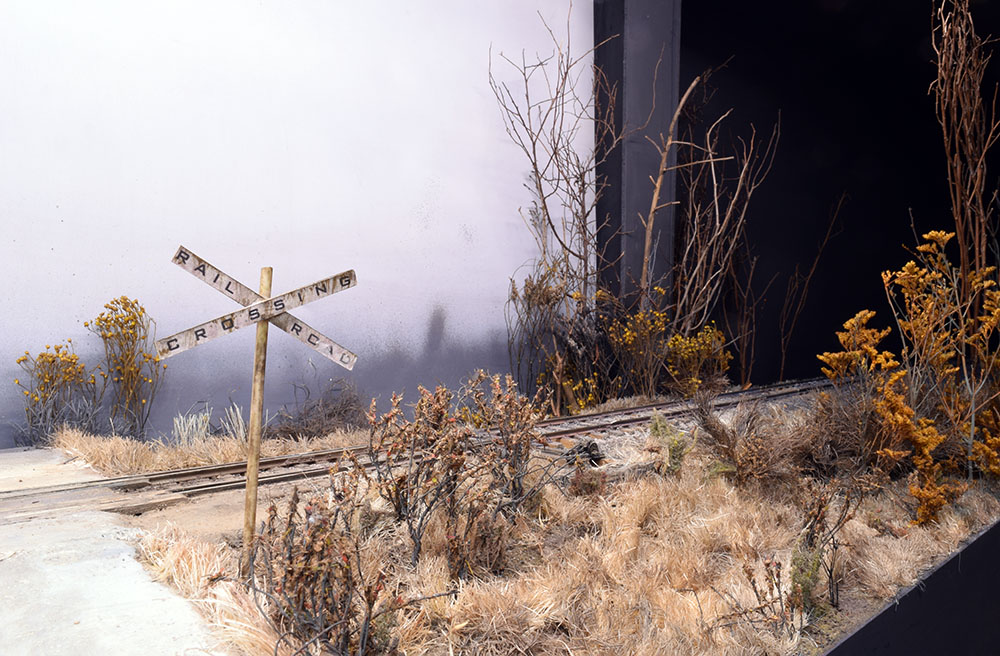Staging Transition Done
You’ll recall from this post I rejected the typical solutions for a physical barrier between the on and offstage areas of the scene. I’m not going through a wall, nor did I wish to wrap the backdrop around the edge of the scene in the pretense that it’s a volume of space instead of a simple flat plane.
Our problem/answer mentality settles quickly on the easy or obvious rather than look at the problem differently. If the track pierces a wall then many of the disguise-the-hole-in-the-sky tactics we’re used to would work. However, those conditions aren’t present here. Before diving into solutions, design thinking asks a more fundamental series of questions.
What is the context here?
Any solution has to take the existing conditions into account. The context of my scene is one of open country with flat terrain.
What is the experience I want?
I want to feel I’m in a distinct place, focused on what’s happening in front of me and free from distractions elsewhere.
After some consideration the core design question became: How does the train go away gracefully in a flat, open landscape?
Our actual experience suggests a train gradually recedes from sight over time and distance, which leads to another question:
How do you suggest distance where none exists?

I screened the column in the background with more scrub growth and taller trees. It’s effective but I see more can be done here. The growth on both sides of the track act as a natural portal for the train to enter from. I no longer have to see where the train came from or where it may go next. In the darkened staging, time and distance are suggested instead of represented literally.
What we’re really doing is creating an emphasis of one area over the other and a design perspective understands there is more than one way to do that. A focus on track planning isn’t likely to come up with that understanding because that isn’t how track planning sees the world.
Design, by contrast, deals with the intangible factors we sense but perhaps aren’t certain how to describe. My use of light, color and contrast at both ends of the scene come from a different framework than we typically use.
Light gives shape to forms and allows us to see them. Without light, the forms are still there but we can’t perceive them.
Color connects the brain to an emotional language beyond words.
Contrast is the mechanism of clarity. It separates and establishes the difference between objects.
As a creative pursuit, modeling is not separate from the larger world of design. The design of Mill Road uses a set of tools that look at the craft from a higher level than we’re used to. They only seem strange because we haven’t been taught the principles behind them. We can learn to understand and use those principles to inform and enhance the traditional methods we all know. We just need to make the effort.
Regards,
Mike
MIke,
I like your “on/off stage” idea. Very similar to how plays have used dark curtains and light to draw attention to the stage. I think I will mimic your approacj in future projects
Hi Matt,
I appreciate the kind words. I hope the techniques work for you as well as they have for me.
Regards,
Mike